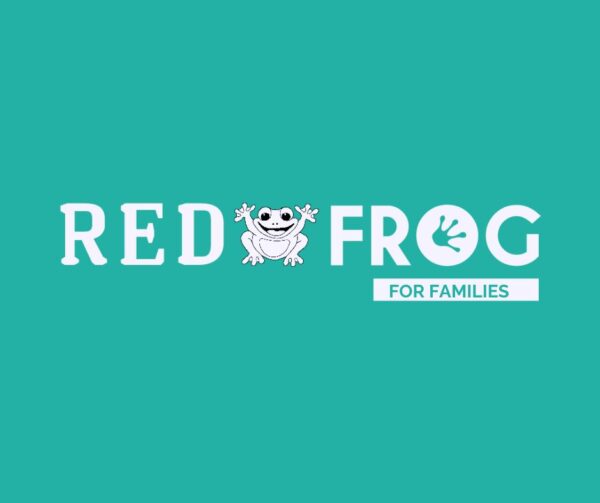Change doesn’t have to shake your culture or blow up your team; done well, change creates momentum and energy. Business leaders have a key role to play in guiding teams through change, ensuring organisational success and developing future leaders.
Leaders who create this momentum don’t rely on rousing speeches or perfect plans; an effective leader demonstrates emotional intelligence and strong leadership skills by building certainty in ambiguity, adapting to the needs of the team and keeping their own emotions steady enough for others to focus on the work. This is a practical approach you can use today.
Senior leaders communicate to create certainty (even when the future isn’t)
When people say they want “certainty”, they don’t mean guarantees. They mean reliability: the confidence that you’ll tell them what you know, be transparent about what you don’t and turn up regularly and be willing to share. A consistent rhythm of communication matters more than the size or enthusiasm of any single update.
Executive leaders and HR leaders have a key role to play in delivering consistent and clear communication during change, making sure messages are aligned and employees feel supported throughout the process.
This needs no over-engineering – a simple cadence works wonders; a weekly change huddle with your team for 15 minutes, camera on, agenda tight to explain where we are, what decisions have been made, what’s at risk, and what’s the focus for the next 7 days is a good approach.
For a big change, consider a fortnightly Q&A for a wider audience, collect questions in advance and answer live and in writing so nobody is left guessing. Layer up as needed with a lightweight monthly pulse communication to answer any recurring questions, provide confidence, clarity and demonstrate you have the capacity to respond as needed.
What about when there’s nothing to share? Still turn up and communicate! A simple “no updates this week; next checkpoint is Tuesday, 10am” can be the strongest message of all: you are present and you are accountable.
When you communicate, lead with empathy first, facts, figures and next steps second. Make sure context is established early (the critical ‘why now’ is an important part of this) and distinguish clearly between what is staying the same and what is changing to calm nerves and rogue narratives behind the scenes.
Reinforce the organisation’s vision during these communications to keep teams aligned and motivated towards shared goals. Timelines should be explicit, so people know what to expect next, and always close with a clear action and connection point, so people leave the communication knowing what’s next, how to ask questions and how to help.
Simple guidelines or questions can work wonders when considering your communications throughout a change period:
- Where might this land emotionally for different groups?
- What am I glossing over that people will spot in a heartbeat?
- If I went quiet for two weeks, what rumours would rush in to fill the gap, and how can I pre-empt them?
Use questions to keep your message honest and relevant for your team and organisation.
Strong executive sponsorship is essential to support effective communication and managing transitions, increasing the likelihood of successful and sustained change.
Adapt to different organisational change needs: using the QO2 lens.
No two people experience the same change in the same way. It’s no use looking at this as a problem to fix, but reframing this as a reality to lead purposefully is a great place to start.
One helpful lens is the QO2 Profile – the Opportunities–Obstacles Quotient, which describes whether someone tends to notice possibilities first or risks and issues first. It pairs well with a general sense of each person’s resilience in the current season.
Imagine four common patterns:
- Your high-opportunity, high-resilience colleagues are your natural pathfinders. They want room to move and problems worth solving. Give them ambiguous challenges with clear guardrails and invite them to co-design pilots. They don’t need constant check-ins; they need ownership. Identify early adopters among these colleagues and leverage their success stories to drive wider organisational buy-in and encourage others to get on board.
- High-opportunity but lower-resilience people are full of ideas but get overwhelmed by the grind. Offer scaffolding: shorter planning horizons, visible progress markers and regular “are we pacing this right?” conversations. Celebrate micro-wins to keep their optimism fuelled.
- High-obstacle, high-resilience colleagues are your risk whisperers. They spot the potholes and have the grit to steer around them. Bring them into pre-mortems (“If this failed in six months, what likely caused it?”) and make them custodians of the risk log and quality gates.
- High-obstacle, lower-resilience people need predictability and practical support. Don’t mistake this for negativity; often, they’re telling you where it hurts. Offer 1:1 walkthroughs, buddy systems, clear standards and processes and careful sequencing. Reduce cognitive load, and they’ll move with you.
A change agent plays a key role in facilitating and promoting change by communicating effectively, showcasing early wins and engaging stakeholders to get buy-in and enthusiasm throughout the organisation.
Perhaps adding to your guiding questions list may help your communications even more:
- Which roles cop the brunt of this change first and longest?
- Who are my energisers, realists and sceptics, and how can I use each well?
- What early overload signals will we treat as red flags, and what will we pause if they appear?
- How do we make sure we know what’s top of mind for our team, or how we want them to flag risks?
When you adapt your leadership to these patterns, you turn difference into a strength and make communication powerful and meaningful. For change leaders, investing in professional development and continuous learning is essential to lead teams through change and ensure ongoing success.
Before, during and after: how to make the change management process stick
Before you announce anything, get your house in order.
- Write a one-page narrative that covers why now, what’s changing, what’s staying the same, how we’ll work through it and the first milestones. Consider how the status quo will be challenged and what parts of the company’s structure will be affected.
- Communicate decision rights upfront, including who decides, who contributes and who needs to be informed, so progress doesn’t stall in a fog of approvals.
- Map stakeholders and impacts at a practical and organisational level: roles, processes, tech, capability, emotional impact and the company’s structure. Be honest about capacity and how changing projects will affect different areas.
- Assemble a small champions network – credible voices across functions – and equip managers well to communicate the change through the business.
- Choose your feedback channels in advance so people know where to put their concerns.
A key part of successful change management is getting employee buy-in early, as this sets the foundation for adoption and sustainability.
During the roll-out, think drumbeat, not drum solo.
- Launch with the narrative and the first 90-day milestones so people can see the path, not just the destination. Keep the communication cadence you’ve established ticking like clockwork and publish notes after each.
- Check in on teams around key areas of confidence, clarity and capacity and act on feedback quickly.
- Bank and celebrate some short-term wins in the first month to mark progress and set momentum.
- Spend time with your managers: sit in on tough team meetings, offer just-in-time coaching and help them translate big messages into local meaning. Change managers play a key role in supporting teams and ensuring operational efficiency throughout the roll-out.
After go-live, hard-wire and reinforce the new way into your culture and operational rhythms.
- Update your processes and norms so the system rewards the behaviours you want to keep.
- Hold feedback retros at 30, 60 and 90 days and publish “what you said / what we did / what’s next” summaries so people see their fingerprints on the outcome. This helps people understand what worked and what can be improved.
- Ensure role clarity and career pathways, and don’t just celebrate project finish lines; spotlight the everyday behavioural shifts that made the change possible.
After go-live, organisations often enter a neutral zone – a transitional period where the old ways have been left behind but the new ways are not yet fully established – requiring patience and support as teams adjust. Team training is key during this phase to embed new processes and reinforce desired behaviours.
A robust change strategy is essential to manage change well and achieve successful change. Using a structured change management process helps organisations track progress, refine approaches and achieve sustainable outcomes.
The bottom line: business outcomes
Great change leadership isn’t louder communication or relentless optimism. It’s steady signals, tailored support and humble consistency; exactly the conditions under which trust and performance can thrive while something new takes root. Start with a clear rhythm, meet people where they are and keep yourself grounded to create certainty in ambiguity and make change stick.
If you’d like to talk more about change, change management or the Q02 profiling tool to support your next initiative, we’d love to chat.




